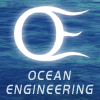
|
Jesse Dosher Senior Engineer jdosher@apl.washington.edu Phone 206-685-5435 |
Department Affiliation
 |
Ocean Engineering |
Education
B.S. Electrical Engineering, University of Washington, 1999
M.S. Electrical Engineering, University of Washington, 2001
Videos
|
Commissioning a Tidal Turbine Testing System |
More Info |
31 Jul 2019
|
|||||||
|
A Laboratory and UW Department of Mechanical Engineering team is working on Lake Washington to continue testing the full-scale prototype marine hydrokinetic energy device. The turbine is mounted on the R/V Russell Davis Light gantry and then lowered between the catamaran hulls so that researchers can simulate flows past the turbine without disruptions from the vessel or other structures. |
|||||||||
|
Publications |
2000-present and while at APL-UW |
The 2nd Generation Turbine Lander: Design, Analysis, and Testing Bassett, C., H. Wood, P. Gibbs, B. Cunningham, J. Dosher, and T. Tran, "The 2nd Generation Turbine Lander: Design, Analysis, and Testing," Technical Report, APL-UW TR 2503, Applied Physics Laboratory, University of Washington, August 2025, 67 pp. |
8 Sep 2025 |
Lessons learned from the design and operation of a small-scale cross-flow tidal turbine Bassett, C., P. Gibbs, H. Wood, R.J. Cavagnaro, B. Cunningham, J. Dosher, J. Joslin, and B. Polagye, "Lessons learned from the design and operation of a small-scale cross-flow tidal turbine," J. Ocean Eng. Mar. Energy, EOR, doi:10.1007/s40722-025-00411-y, 2025. |
More Info |
1 Jul 2025 |
|||||||
|
In 2023, a first-generation prototype of a small-scale marine current turbine was operated in Sequim Bay, Washington (USA) for 141 days. The system, referred to as the Turbine Lander, was the product of a laboratory-to-field effort to develop a system that enables enhanced ocean sensing or vehicle recharge in remote, energetic settings. The turbine consists of a vertical-axis, cantilevered rotor (1.19 m x 0.85 m) with four foils installed on a gravity foundation. A broader range of constraints including the deployment strategy, site characteristics, and estimated loads, drove the system's design. This work presents the design, characterization, operation, and post-recovery engineering assessment of the Turbine Lander. Pre-deployment characterization efforts yielded a peak power coefficient of approximately 0.3 for the rotor, although system losses resulted in much lower water-to-wire efficiencies under most operating conditions. The results demonstrate the importance of co-design among key components of the powertrain and control systems to achieve acceptable system efficiency across operating conditions. |
|||||||||
APL-UW Field-Scale Axial Flow Turbine: Design and Specifications Bassett, C., J. Burnett, K. Van Ness, H. Wood, J. Dosher, B. Cunningham, J. Noe, and T. Tran, "APL-UW Field-Scale Axial Flow Turbine: Design and Specifications," Technical Report, APL-UW TR 2402, Applied Physics Laboratory, University of Washington, Seattle, September 2024, 27 pp. |
More Info |
29 Aug 2024 |
|||||||
|
Axial flow turbines designed to generate power from underwater currents (tidal and riverine) are similar to the commonly observed wind turbines. With support from U.S. Naval Sea Systems Command, engineers at the Applied Physical Laboratory of the University of Washington (APL-UW) have designed and fabricated a one-meter diameter axial flow turbine for use in APL-UW’s marine energy research program. The system, referred to as the AFT (axial flow turbine), is designed for deployment from R/V Russell Davis Light, where the vessel, under propulsion, is used to simulate naturally occurring currents for power generation. This report summarizes the AFT’s mechanical and electrical design and is intended as a reference to support research efforts performed using the system. Encoders and six-axis load cells installed on the driveshaft and at the root of one of the rotor’s three blades, allow for characterization of the forces and torques generated during operation. The system was designed for reliability and to acquire scientific-quality data to advance studies of axial flow turbines. Thus, system components selected in the design process are not intended to maximize system efficiency and power extraction. |
|||||||||




